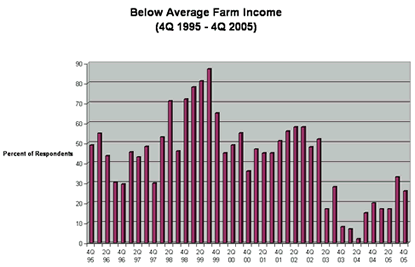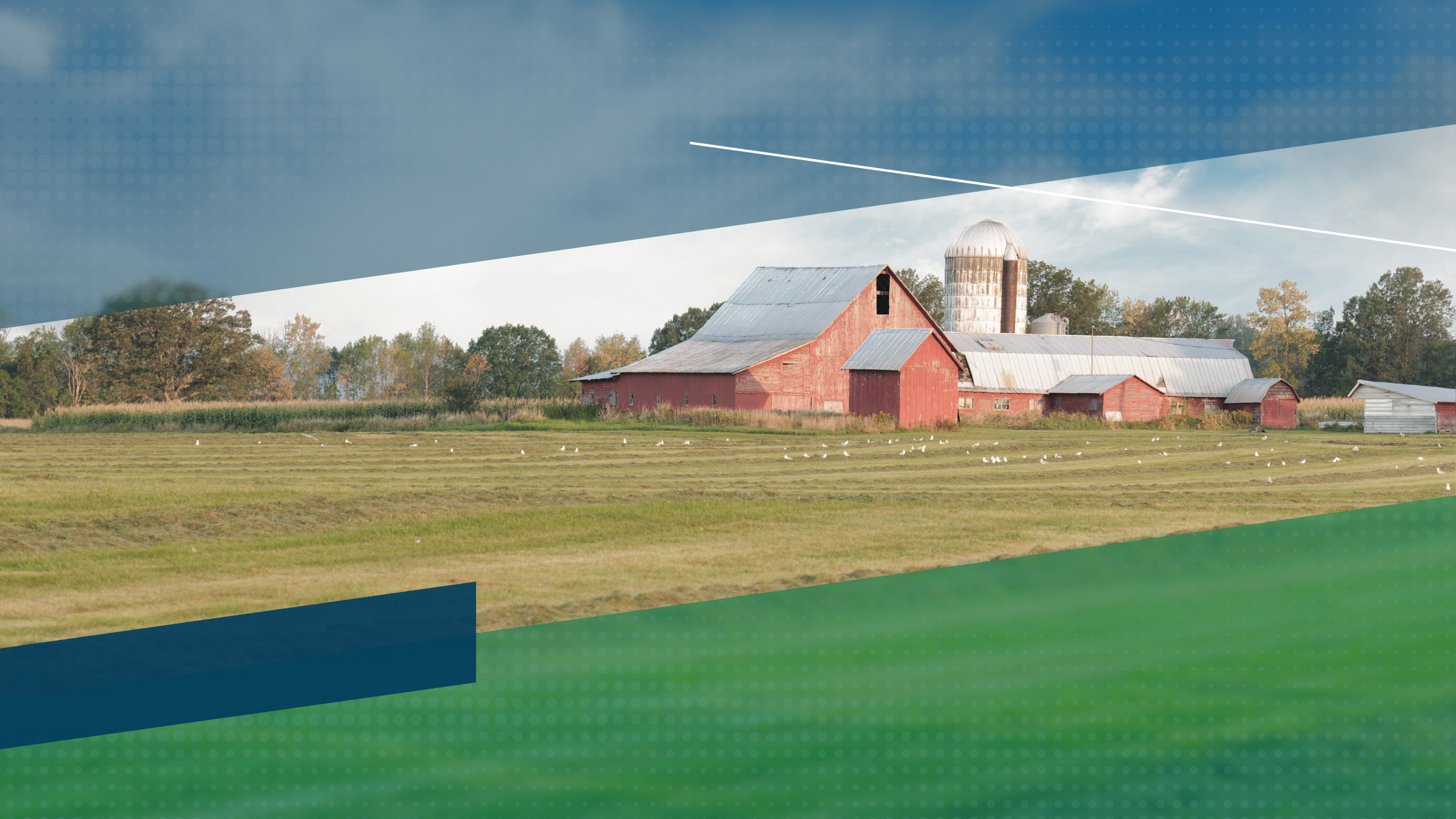“Most farmers had a good to very good year,” commented a Minnesota lender in response to the Minneapolis Fed’s fourth-quarter (January 2006) agricultural credit conditions survey. Many respondents indicated increased farm income, capital purchases and household spending. Like many respondents, a South Dakota banker noted that “farmland continues to escalate in price,” even though interest rates increased. “Higher interest rates and fuel cost will take some of the profit out,” reported a Montana lender. The outlook for the first quarter of 2006 is pessimistic as profits are expected to decrease slightly. “Fuel and fertilizer input [costs] are a major concern,” said a North Dakota respondent. Respondents from North Dakota and Wisconsin are the most pessimistic.
Farm income, household spending and capital investment
Farm income and capital investment increased during the fourth quarter of 2005. Forty-two percent of the lenders reported higher farm income in the fourth quarter, while only 26 percent indicated lower income. “Very good crops will provide income for capital purchases,” said a banker from Minnesota. This proved true throughout the district as respondents reported a 33 percent increase in capital spending. Profits are going not only into capital expenditures but also into increased household spending. Forty-one percent of respondents reported an increase in household spending in the fourth quarter. This is especially true in North Dakota, where 53 percent of banks reported increased household expenditures.

Source: Federal Reserve Bank of Minneapolis
Loan repayments and renewals
Despite high input costs and rising farmland costs, agricultural producers appear to be making their loan payments. Loan repayments were stable during the fourth quarter as 59 percent indicated no change in the repayment rate and 25 percent reported an increased rate of repayment. A Montana banker reported that “higher cattle prices have improved farm income, which has led to a higher rate of loan repayment.” In addition, 72 percent of respondents reported no change in loan renewals and extensions.
Demand for loans, required collateral and interest rates
Loan demand remained constant during the fourth quarter. Twenty-six percent of lenders reported increases, and 59 percent indicated no change. Interest rates increased during the fourth quarter, raising the cost of borrowing relative to the third quarter by about 40 basis points for both fixed-rate and variable-rate loans. Collateral requirements did not change much, and no respondents indicated that loans were refused due to a shortage of funds.
Land values
Land values continued to increase. Non irrigated farmland prices showed an average increase of 15 percent from a year ago. Banks also reported that ranch land average prices increased 17 percent from a year ago. A banker from South Dakota is concerned that “with the increased price of real estate, the real expense is increasing more than any return on investment.” Many lenders in the district believe these increases in land values are due to non farmers buying real estate for recreational use. A North Dakota lender stated that “non farm–non resident land buyers are driving our farms out of the market.” (Note: Land prices can vary significantly, not only from state to state, but also from parcel to parcel. For more detailed information on agricultural prices, see the Minnesota Land Economics Web site.)
Outlook
Despite high profits in the fourth quarter of 2005, many respondents enter 2006 with a gloomy outlook. Many believe that high input costs, high land prices and low crop prices will be major concerns in 2006. The outlook is the worst in Wisconsin and North Dakota, where 40 percent to 50 percent of respondents expect farm income to decrease in 2006. A banker in North Dakota predicts that “higher fuel and fertilizer costs will eliminate some producers in 2006.” The majority of respondents expect to see increased household spending, while both income and capital spending will begin to slow. Bankers are also predicting that demand for loans and demand for loan renewals and extensions will increase in 2006. They anticipate that collateral requirements will remain constant.
Appendices: State Fact Sheet | State Fact Sheet-Outlook






